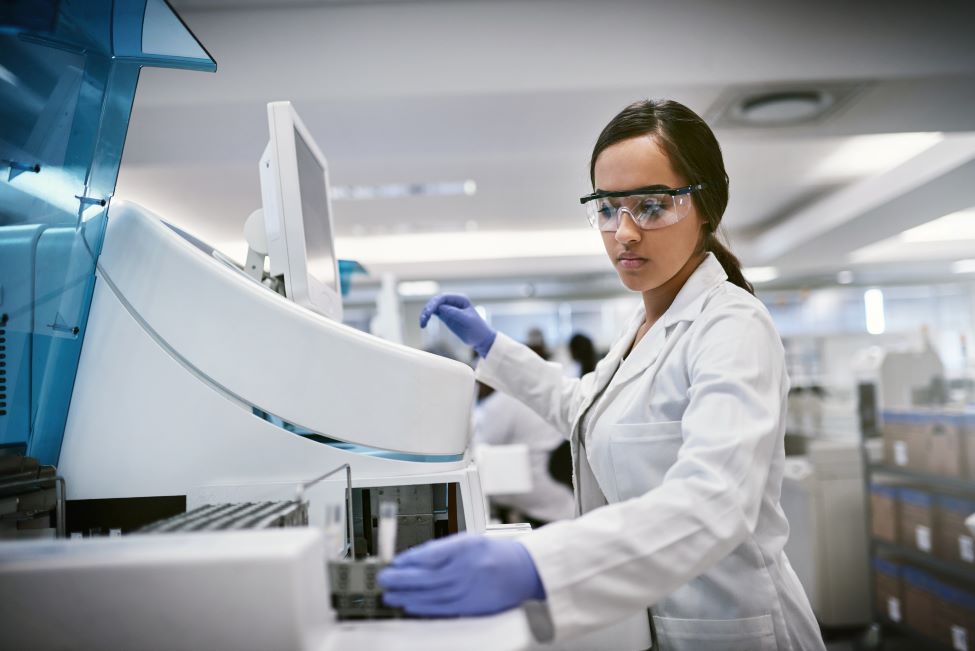FAU Seeks Participants for Study on Effects of Harmful Algal Blooms

FAU seeks participants to help understand the human impacts of harmful algal blooms
During harmful algal blooms, species of cyanobacteria release a variety of toxic compounds including microcystins, a potent toxin, into local waterways. Human exposure comes from ingestion, direct skin contact or inhalation and can lead to a variety of symptoms ranging from gastroenteritis, nausea, allergic reactions and skin rashes to liver damage in severe cases. Despite numerous occurrences of red tide and blue green algae in Florida waters, our understanding of the long-term health effects of exposure to these blooms remains limited.
Researchers from Florida Atlantic University’s Christine E. Lynn College of Nursing and Harbor Branch Oceanographic Institute are currently seeking participants for a study evaluating potential impacts of exposure to harmful algal blooms. With another grant from the Florida Department of Health (FDOH), they will continue the first-of-its-kind evaluation of both the short-term and potential long-term health effects among Florida residents. The “Long-term Effects of Exposure to Harmful Algal Blooms” (LEE-HABs) study uses a collaborative, multisite approach, which includes researchers from Florida Gulf Coast University.
The research team currently has an active cohort of 150 participants, and they are recruiting 30 additional participants this year. They will be recruiting and collecting non-bloom data for the Cape Coral area at the Public Works Department, 815 Nicholas Parkway East, on Thursday, Oct. 26, beginning at 8 a.m. Appointments are available, and walk-ins are welcome.
This latest study expands upon prior studies conducted in 2016, 2018 and previous FDOH studies from 2019 to 2020 and 2021 to 2022.
“We have minimal data on health outcomes related to human exposure, despite the prevalence and intensity of cyanobacterial blooms in South Florida,” said Rebecca S. Koszalinski, Ph.D., principal investigator and an associate professor in the Christine E. Lynn College of Nursing. “Understanding short- and long-term health impacts and outcomes is crucial to protecting the health of Floridians. By developing tools to measure concentrations of harmful algal blooms toxins in the environment and multiple human tissues, we will gain a better understanding of health-related outcomes and health care needs in Florida and elsewhere.”
The study also is the first to evaluate the potential effect of exposure to COVID-19. Researchers are exploring if there is a relationship between a history of being infected with COVID-19 and susceptibility to the effects of harmful algal blooms exposure.
The latest study involves a survey to identify the potential routes, duration and types of exposure to blooms through recreational and occupational activities. Researchers also will assess potential effects on individuals with pre-existing conditions such as asthma and chronic gastrointestinal disorders. Bloodwork including liver enzymes and renal markers will also be included in this study.
Algal toxin concentrations including microcystin and brevotoxin will be measured in blood, urine and nasal mucosa. The toxin levels also will be used to understand the dose-response relationships with self-reported respiratory, dermal and gastrointestinal symptoms. Urine and blood analyses will be conducted in collaboration with the United States Centers for Disease Control and Prevention, which is developing methodology to detect emerging algal toxins in human tissues.
The study includes conducting environmental sampling of water and air to measure potential sources of exposure.
Researchers have developed a bio-repository and participant registry to store the data and samples in collaboration with FAU’s Clinical Research Unit within the FAU Division of Research. The purpose is to build an ongoing infrastructure to support the team’s long-term studies on the health effects of exposure to current and emerging harmful algal blooms toxins and serve as a resource for researchers around the state.
Malcolm McFarland, Ph.D., a research associate at FAU Harbor Branch, is co-principal investigator of the study. The research team also includes Michael Parsons, Ph.D., co-investigator and a professor of marine science at Florida Gulf Coast University.
For more information or to participate in the study, call or text 561-297-4631, or email Rebecca Koszalinski at NurHAB@health.fau.edu. Community participants will receive up to $25 in gift cards as an incentive for participating in data collection activities each year.
-FAU-
Latest Research
- FAU Researcher to Make Big 'Splash' in NatGeo's SharkFestShark fanatics, science buffs and ocean advocates won't want to miss a thrilling new episode of NatGeo's "Florida's Bite Capital," with FAU professor Stephen Kajiura, Ph.D. on National Geographic.
- FAU's Paulina DeVito Awarded Elite NSF Graduate Research FellowshipPaulina DeVito, 22, a Ph.D. candidate in FAU's College of Engineering and Computer Science, has been awarded a prestigious National Science Foundation fellowship for her exemplary work in AI and education.
- Hope for Brain Cancer: FAU Awarded Grants for Glioblastoma TreatmentFAU researchers are pioneering a new approach to treating glioblastoma - a highly aggressive brain cancer with one of the highest mortality rates - by targeting the gene MBLAC1 for the first time.
- Chef José Andrés' Longer Tables Fund Will Expand FAU Queen Conch LabThe grant awarded to FAU Harbor Branch supports the expansion of its queen conch aquaculture lab and is part of a global philanthropic effort to tackle urgent challenges through the power of food.
- FAU Gets $1M to Prevent Medication-related Harm, Falls in Older AdultsFAU Schmidt College of Medicine researchers will develop a targeted approach to eliminate the guesswork in medication management to reduce the risk of adverse drug events - particularly dangerous falls.
- Suicide Risk Elevated Among Young Adults with DisabilitiesSuicide is the third leading cause of death in young adults. For those with intellectual and developmental disabilities, the crisis is worse. New research urges prevention, screening and intervention reforms.






